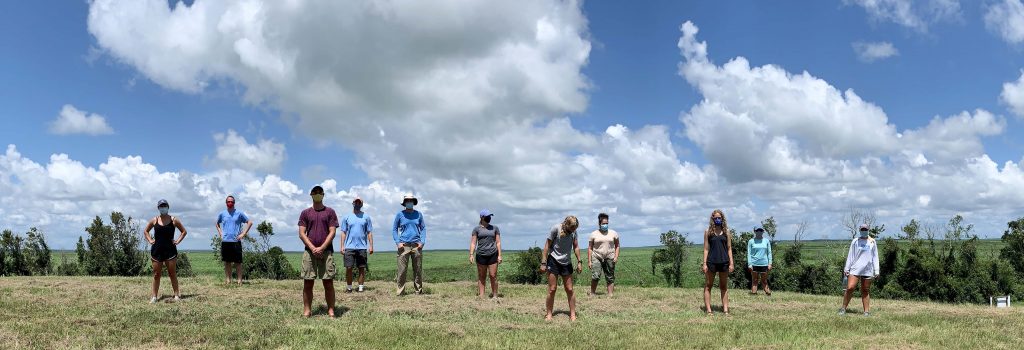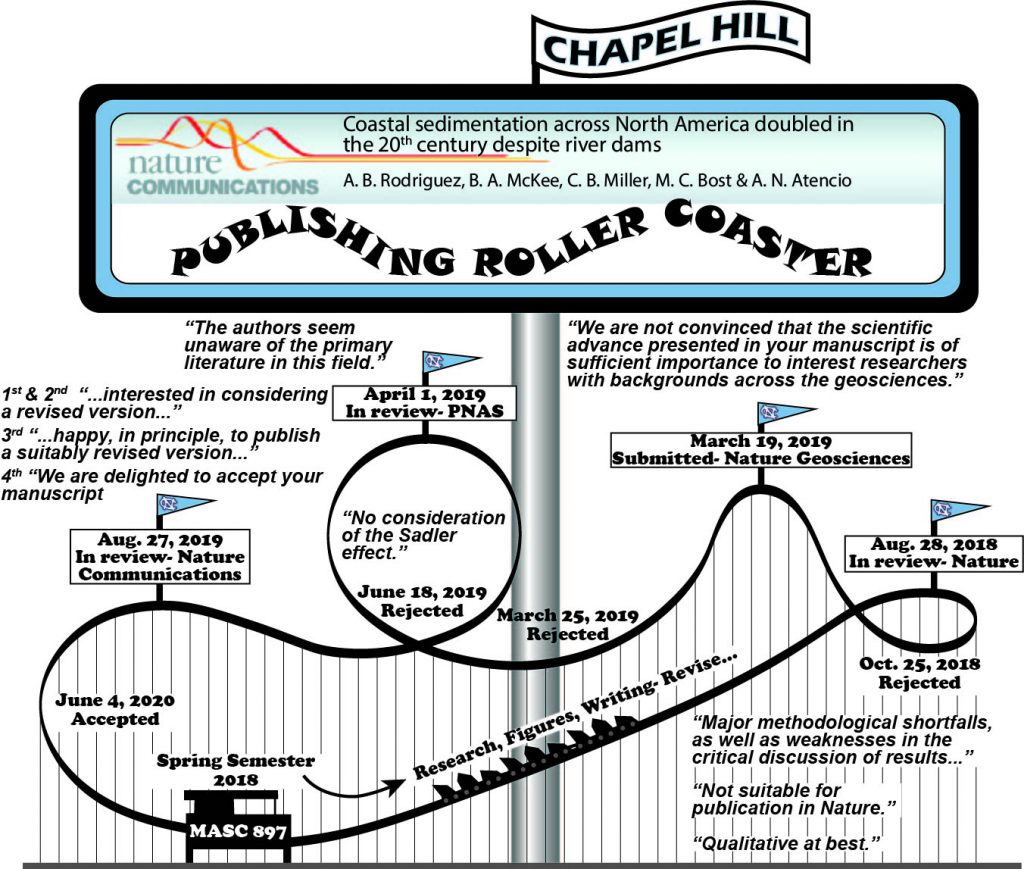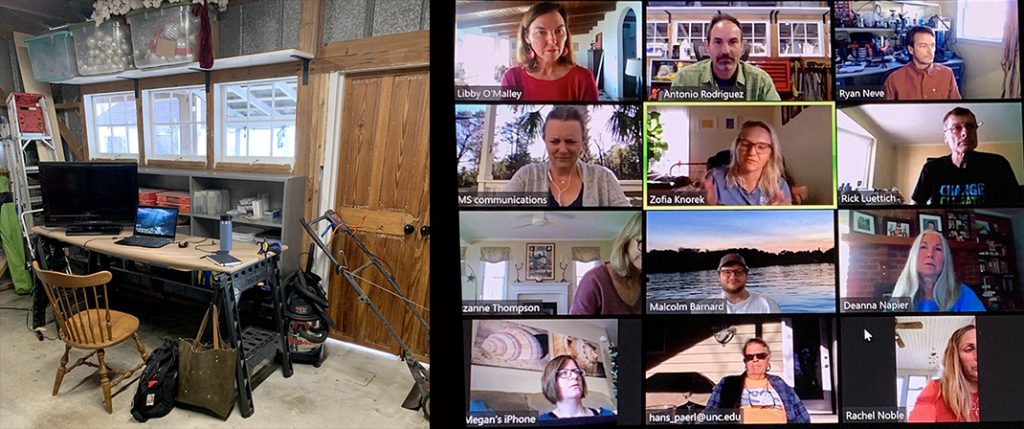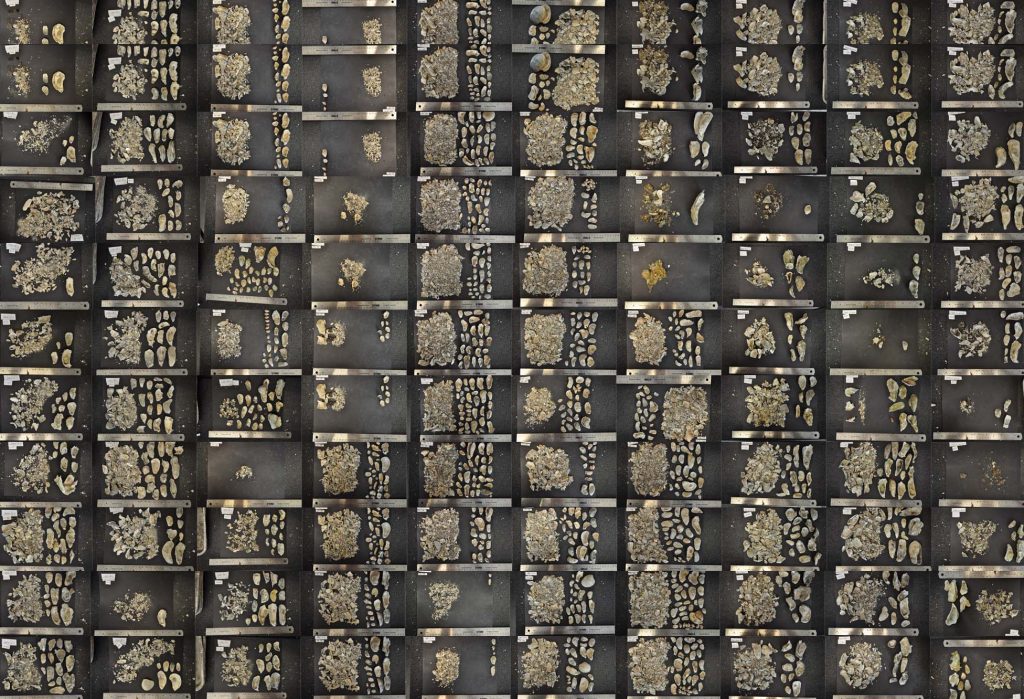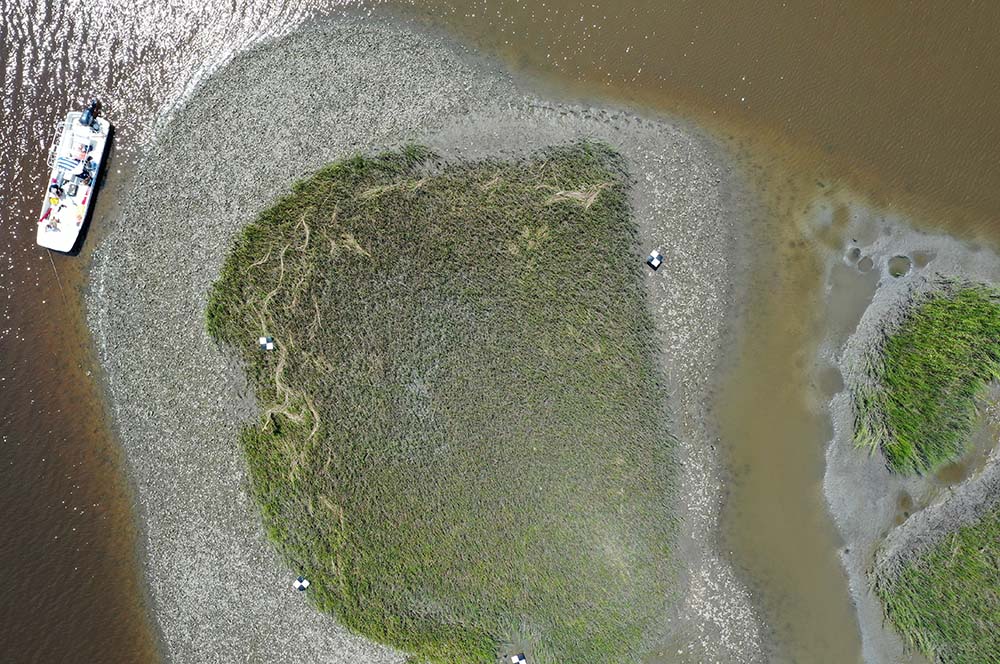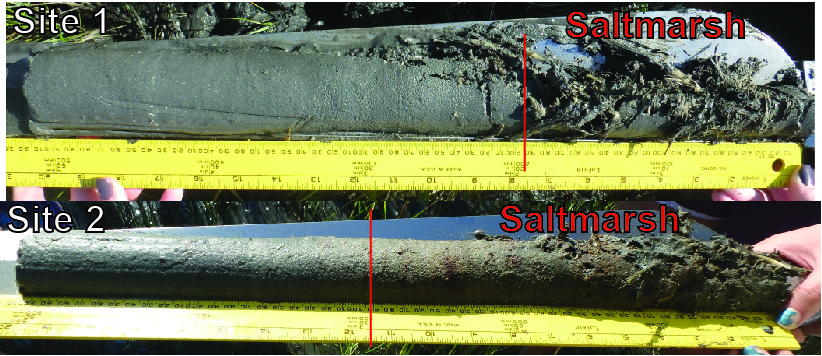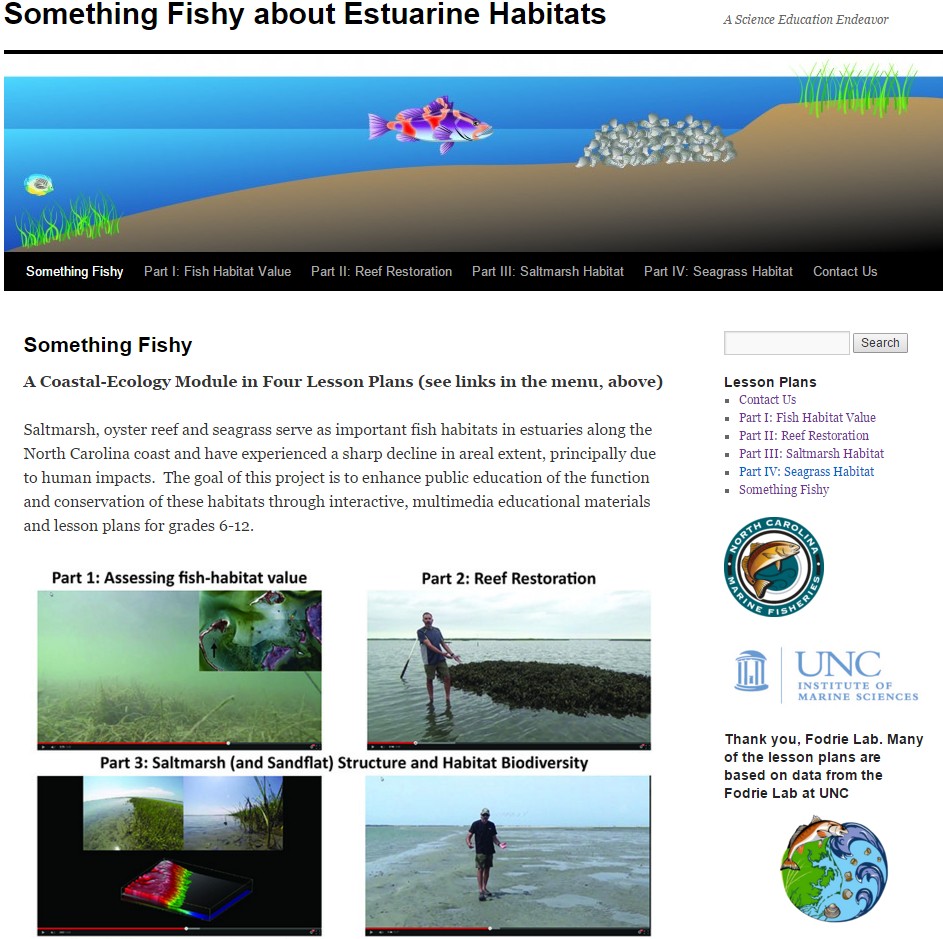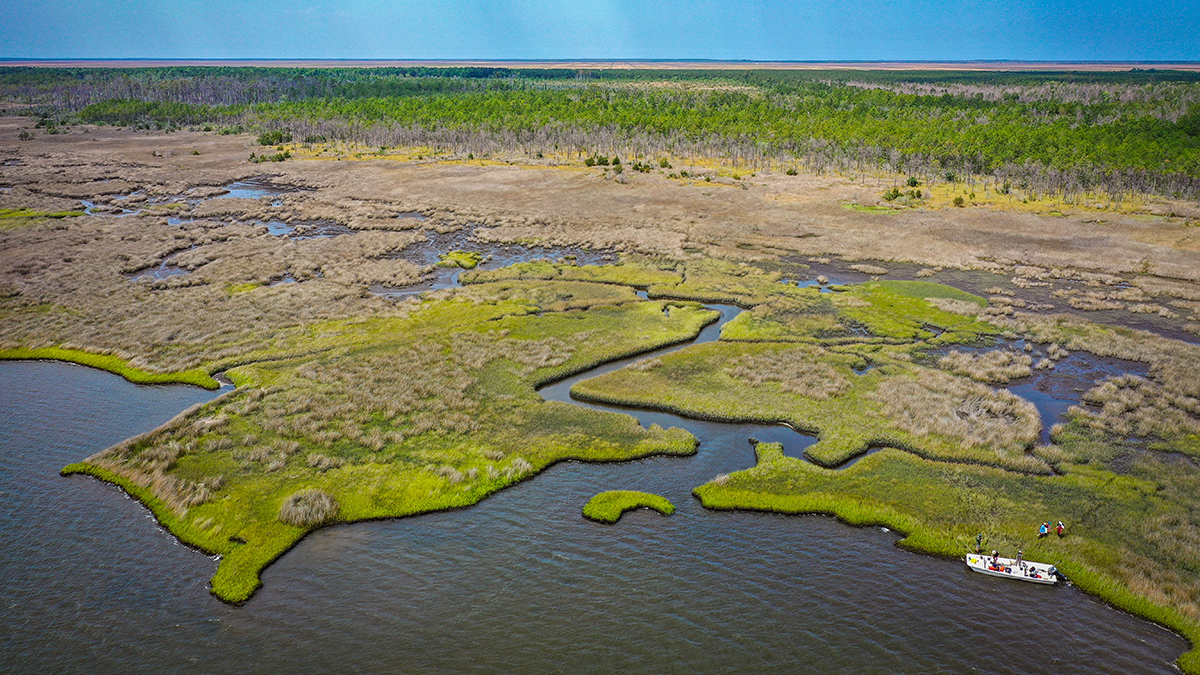
Oyster Creek, North Carolina
It is difficult to value salt marsh as a blue carbon habitat given the wide range of carbon accumulation rates reported in the literature. From collecting 51 sediment cores from seven salt marshes in North Carolina we found that the 14 to 323 g C/m^2 /yr range of carbon accumulation rates results from the landward or basinward trajectory of salt marsh colonization and the intertidal space available for accretion. Rates increase with accelerating sea-level rise and are highest at young and expanding marsh edges. The highest carbon densities are near the upland, highlighting the importance of this area for building a rich stock of carbon that would be prevented by upland development.
This study was part of Carson Miller’s MS thesis at UNC. She published two papers from work that took us about three years to complete.

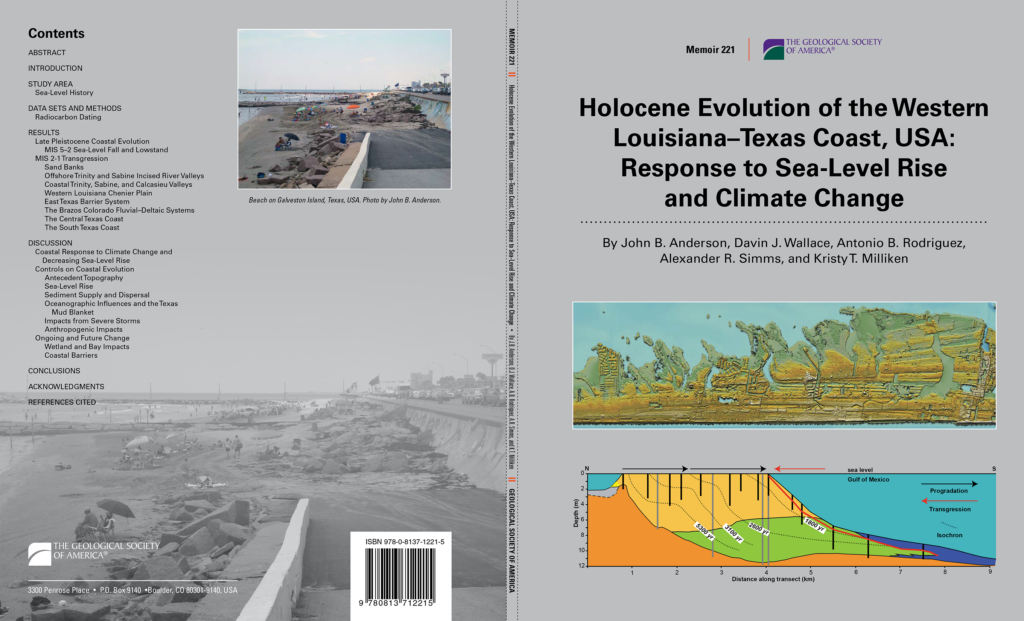
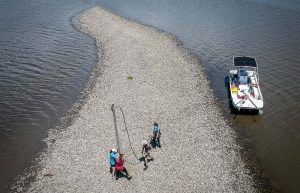
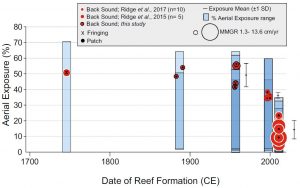 The blue bars on this graph are showing the range of exposures encompassed by each reef we looked at in Back Sound, NC. The tops of the older reefs are high and out of the water up to 70% of the time. The red circles represent the aerial exposure where the reefs grow at their highest rate (cm/y) and that also increases as the reef ages. We continue to examine oyster reef growth with the aim of defining conditions where they grow best. This information will be used to help optimize the design of restoration projects.
The blue bars on this graph are showing the range of exposures encompassed by each reef we looked at in Back Sound, NC. The tops of the older reefs are high and out of the water up to 70% of the time. The red circles represent the aerial exposure where the reefs grow at their highest rate (cm/y) and that also increases as the reef ages. We continue to examine oyster reef growth with the aim of defining conditions where they grow best. This information will be used to help optimize the design of restoration projects.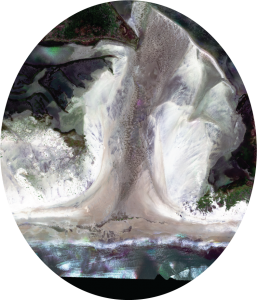 I used to think that washover fans were all event deposits. A major storm, such as a hurricane, impacts a barrier island, causes overwash, transports sand across the island, and deposits a washover fan. After the storm passes, vegetation colonizes the washover, traps wind-blown sand, and builds island elevation and resistance to further overwash. While that general model is certainly applicable to many washover fans, others take time to form. We recently published a paper in
I used to think that washover fans were all event deposits. A major storm, such as a hurricane, impacts a barrier island, causes overwash, transports sand across the island, and deposits a washover fan. After the storm passes, vegetation colonizes the washover, traps wind-blown sand, and builds island elevation and resistance to further overwash. While that general model is certainly applicable to many washover fans, others take time to form. We recently published a paper in 